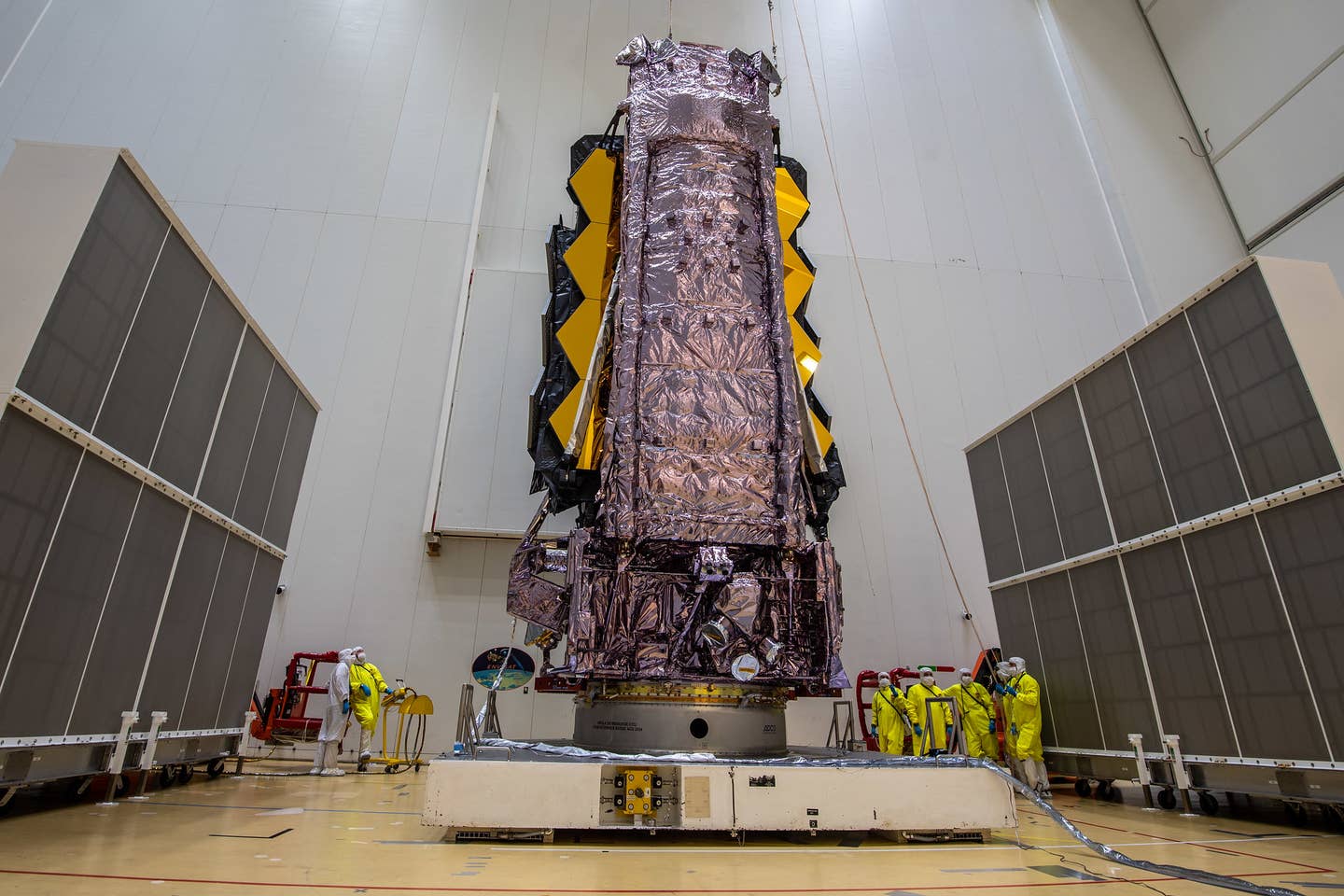5 Things to Know About the James Webb Launch
The massive James Webb Space Telescope has been decades in the making and is scheduled to launch Christmas Day.

On December 11, NASA’s James Webb Space Telescope was secured on top of the Ariane 5 rocket that will launch it to space from Europe’s Spaceport in French Guiana. [Courtesy: NASA]
The massive James Webb Space Telescope has been decades in the making and is scheduled to launch Christmas Day. Here’s what you need to know about the project and the launch:
1. Webb is the most powerful space telescope ever made.
The telescope, or Webb for short, is truly a feat of modern engineering. Webb’s gold-coated primary mirrors span 21 feet and can individually focus on different areas of our galaxy.
With its tennis court-sized sunshield, Webb will be able to block out light from the sun, moon, and Earth. This will help negate light pollution for its highly sensitive instruments, but it will also keep the components cold at nearly minus-390 degrees Fahrenheit.
According to NASA, Webb will be able to essentially look back in time to capture images of the very early beginnings of our universe.
2. NASA only has one chance to get it right.
While Webb is the most powerful telescope ever made, it’s also the largest—which comes with some major difficulties.
In order to get Webb into space, it has to be folded into the payload fairing of the Ariane 5 rocket. Comparably, this is the easy part. What comes after will have NASA scientists and engineers on edge.
Once in space, Webb will have to successfully unfold its 18-segment mirrors, sunshield, solar panels, and other instruments. Since Webb’s destination is around 1 million miles from Earth, astronauts won’t be able to make any repair trips. This unfolding process will literally be all-or-nothing.
3. Webb is the result of international collaboration.
NASA, alongside the Canadian and European space agencies, enlisted the help of more than 300 collaborators from around the world.
Webb was originally known as the Next Generation Space Telescope, but was renamed after NASA’s second administrator James E. Webb in 2002. Construction of Webb began two years later, with components for the infrared telescope developed in multiple countries.
One notable entry is that of the Guiana Space Centre in South America, where Webb will begin its journey to outer space.
4. The Ariane 5 Rocket is impressive.
Provided by the European Space Agency (ESA), the Ariane 5 rocket is “one of the world’s most reliable heavy lift vehicles,” with 100 successful previous missions into orbit.
The multistage Ariane 5 uses solid and cryogenic liquid propellant, and will achieve nearly 27 minutes of total powered flight. The lower composite stage boosters will deliver approximately 300,000 pounds of thrust, providing a little over 90 percent of total thrust at liftoff.
The rocket’s payload fairing is just big enough to fit the folded-up Webb telescope. It’s interior dimensions are about 15 feet in diameter and 53 feet in height. After leaving Earth’s atmosphere, the fairing will jettison, reliving the upper stage engine of 5,900 pounds.
5. You can watch it for yourself.
Webb’s current launch window opens on Christmas Day at 7:20 a.m. ET. The Ariane 5 rocket will launch from French Guiana—given its proximity to the equator, the rocket will be able to use the Earth’s rotational momentum to help catapult it into space.
The launch will be streamed live, starting at 6 a.m. ET, on NASA’s website. Additionally, the livestream will also be broadcast in Spanish starting at 6:30 a.m.

Subscribe to Our Newsletter
Get the latest FLYING stories delivered directly to your inbox






